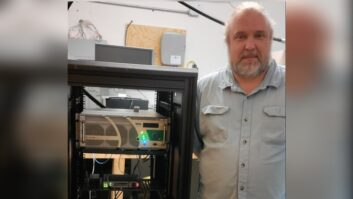Several large-market and large-signal broadcast owners oppose a proposal by station owner Matt Wesolowski of SSR Communications that he says would make it easier for short-spaced commercial FMs to upgrade their facilities.
NAB is opposing the idea as well.
In the petition, SSR seeks to eliminate the need to specify theoretical fully-spaced allotment/assignment coordinates for non-reserved FM minor modification applications; modify Section 73.215 of the FCC rules to allow contour protection only to existing facilities, not maximum class facilities, for all non-reserved FM band stations (not just those authorized under 73.215); and eliminate the minimum spacing distances in Section 73.215(e).
Comments on RM-11643 were due Oct. 28.
Filing together, Beasley Broadcast Group, Bryan Broadcasting Corp., Clear Channel Communications, Delmarva Broadcasting Co., Merlin Media and Radioactive oppose the changes, calling them detrimental to the non-reserved FM band and the public interest.
The proposals “will only serve to allow increased contours by existing stations, particularly into metropolitan markets, while foreclosing opportunities for new stations at unserved communities, low-power FMs and innovative uses of existing spectrum,” the six radio groups wrote.
They say a contour protection system is inefficient. “While more individual stations serving a small area can be ‘squeezed in’ using contour protection as the spacing scheme, the total area which receives productive service will be less than under a system where stations are protected according to their class of service, as with the current minimum distance spacing system,” they stated.
NAB said the FCC’s rules for minimum distance separation for non-reserved FM radio “created a practical and flexible licensing system.” Replacing these rules with contour protection standards similar to those used for noncommercial services in the reserved FM band would increase congestion in the band and prevent upgrades, power increases, transmitter relocations and other station improvements, according to NAB.
More importantly, the proposed changes could impede the development of HD Radio, NAB continued. It says digital broadcasting must be allowed to develop in an environment that is as free of interference as possible.
“Many broadcasters are still considering the most economical way to deploy digital or expand radio services,” including raising their digital power level. Any concerns over increased interference from newly allocated or modified FMs using the proposed contour protection methods “could significantly compromise those plans,” states NAB.
IBiquity Digital said SSR has not shown that the proposed rule changes are compatible with digital broadcasting and until that can be done, it opposes the petition.
Radio World has reported on some filings that support the concept. More have since been filed.
The Mississippi Association of Broadcasters supports the proposal, writing that the system has worked well in the reserved portion of the FM band and would provide commercial FMs “with much-needed flexibility to improve service to wider areas, without causing interference to adjacent or co-channel stations.”
MAB calls the FM band “mature” and says stations “have had ample time to reach full operations.”
So does KD Radio, licensee of KDSK(FM), Grants, N.M., a Class C2 that has been trying for years to upgrade to a Class C1.
Carl Haynes of Commander Communications in Jackson, Miss. called the rule change “long overdue.”
“In my area there are stations that have been protected by the current rules that have no intentions of taking advantage of the contours that other broadcasters must protect. In one such case a station’s tower was destroyed and the broadcaster rebuilt the new tower at the same height as the old one, yet other broadcasters still protect this station’s maximum predicted contour,” wrote Haynes.
Without taking sides, the Association of Federal Communications Consulting Engineers suggests the FCC propose rule changes to address the issue and also consider alternative proposals.











